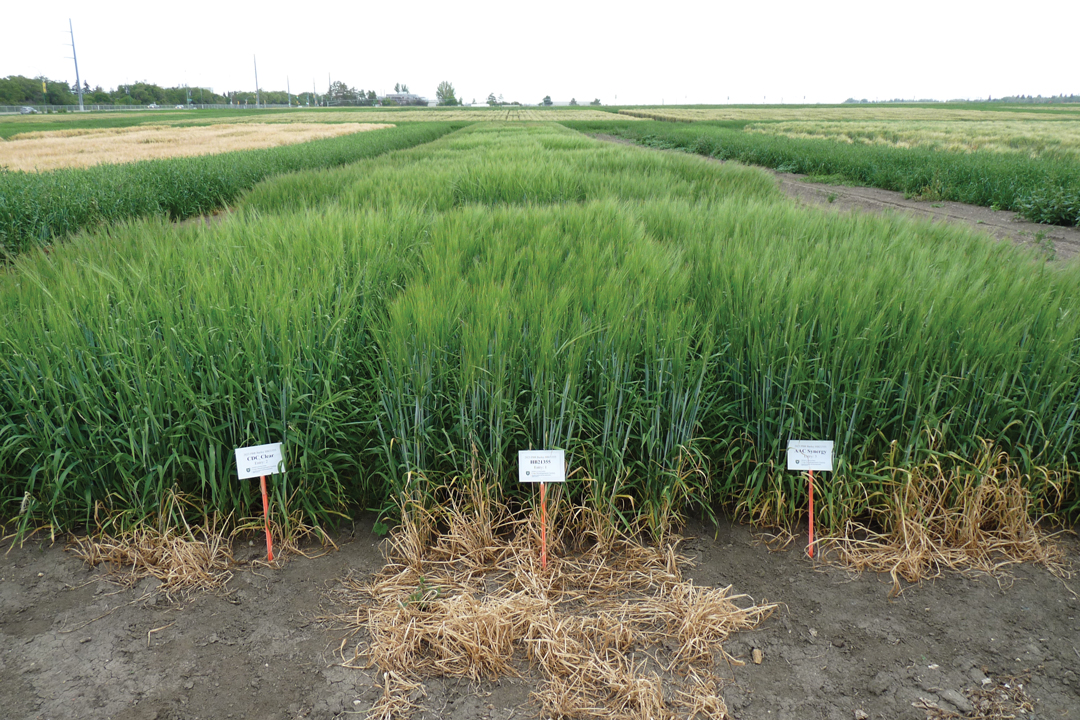A BETTER WEATHER CONVERSATION
BY STAN BLADE, P. Ag.
“Everyone talks about the weather but no one does anything about it.” —Charles Dudley
In the world of agriculture, weather is always part of the conversation. The prediction of weather has come a long way. At one time, people from across the country sent their local observations by telegraph into a central office. In Canada, the Meteorological Service of the Dominion was set up in 1871 with a limited number of weather-gathering stations to collect and disseminate information to the public. Over the decades the service evolved with the collection of a greater number of data points, but its output remained remarkably consistent. The office sent written notices about upcoming weather events to airports, media outlets and other users.
Clichés aside, weather prediction is ridiculously difficult. There is so much happening in the atmosphere that must be considered, so technology has created a “supply chain” of observations. Among the tools now used is Doppler radar. It allows meteorologists to observe severe storms by analyzing precipitation, the rotation of thunderstorm clouds and airborne tornado debris as well as wind strength and direction.
In Alberta, Doppler radar stations are located at Spirit River, Carvel, Strathmore and Schuler. The proliferation of satellite information has led to a vast increase in available weather imagery. Meteorologists also send up weather balloons (radiosondes) at least twice a day. This is the main source of upper-air data for air pressure and relative humidity as well as for wind speed and direction.
Of course, the traditional ground-based, and now mostly automated, weather observance systems are still extremely important in delivering precipitation, temperature, wind speed, direction and other weather factors. In addition, a significant volume of weather data is still supplied by volunteers such as the amateur meteorologists of the Community Collaborative Rain, Hail and Snow Network.
The way these observations are utilized has changed significantly over the last decade and will further evolve in coming years. We are now in the age of numerical weather prediction (NWP), which is based on a simple premise. According to Environment Canada: “If we know enough about the state of the atmosphere at the present time, and we know the physical laws that govern the atmosphere, then we can code these laws into a sufficiently fast computer and do a virtual “fast-forward” to see what the atmosphere’s evolution is going to be, through the next few hours or days.”
Supercomputing has created the capacity to run highly complex weather models. In the United States, the National Oceanic and Atmospheric Administration (NOAA) operates the Advanced Weather Information Processing System (AWIPS). The AWIPS has a 5.78 petaflop computing capacity. Each petaflop does one quadrillion calculations per second. While analyzing weather date, these supercomputers incorporate historical weather patterns by employing machine learning, an element of artificial intelligence.
The final step is to use these predictions to create high-resolution graphics that are released across a wide variety of platforms. We can all access real-time smartphone weather applications, national agencies and companies can request long-range weather forecasts for specific locations or growing seasons and we can generate graphic representations of global weather events such as El Niño events over the Pacific Ocean. The detailed graphics provide information on time and movement of weather patterns. NWP has led to “nowcasting,” which provides incredibly accurate weather predictions on a two- to six-hour timescale. This is a valuable resource for planners of outdoor events be it an equipment show, concert or sporting event.
But challenges remain. The NOAA estimates that global weather forecasting uses only one to three per cent of currently available satellite data because models and computing capacity cannot handle more. Global data sharing is also lacking. In his 2019 book The Weather Machine, Andrew Blum outlines the history of global sharing of meteorological data and calls this collaboration the “last bastion of international co-operation.”
We are facing a greater number of extreme weather events with direct impact on communities and food production. To paraphrase The Economist, weather reports are the product of an amazingly complicated process that weaves together single observations into dense works of data art upon which lives and livelihoods depend. As much as we are sometimes frustrated by them, we should not take the for granted.
Stan Blade, PhD, is dean of the Faculty of Agriculture, Life and Environmental Sciences at the University of Alberta.







Comments